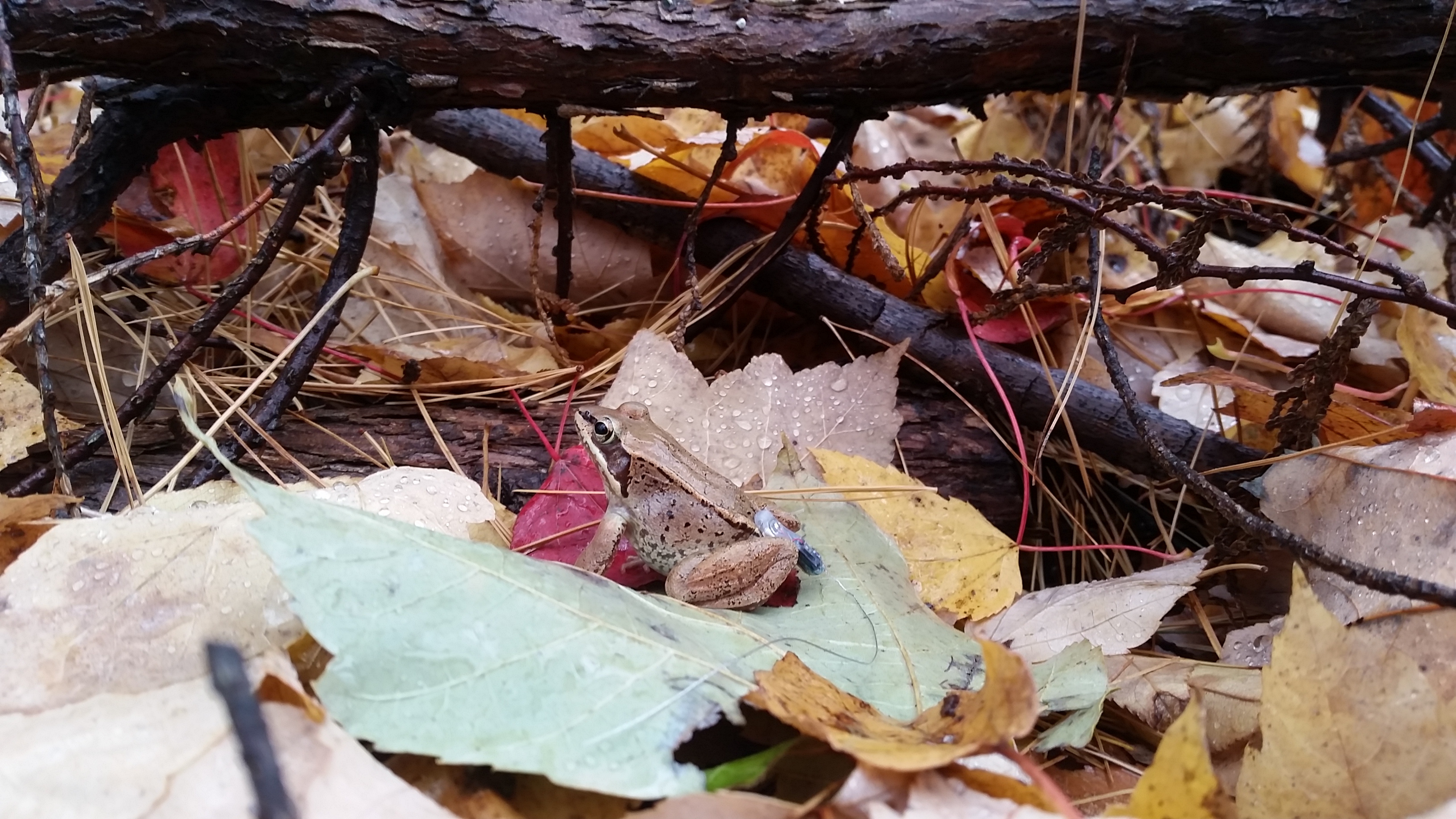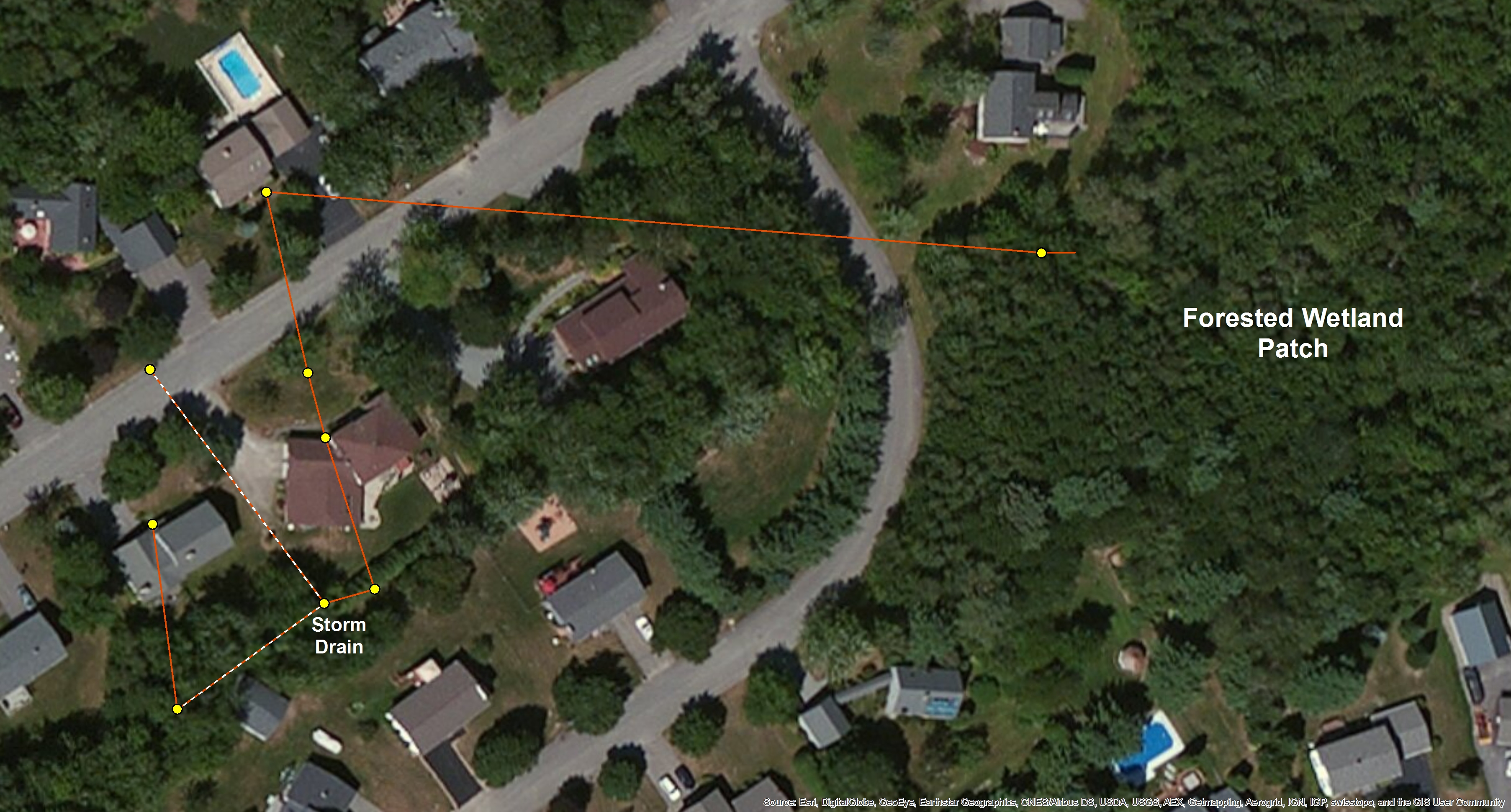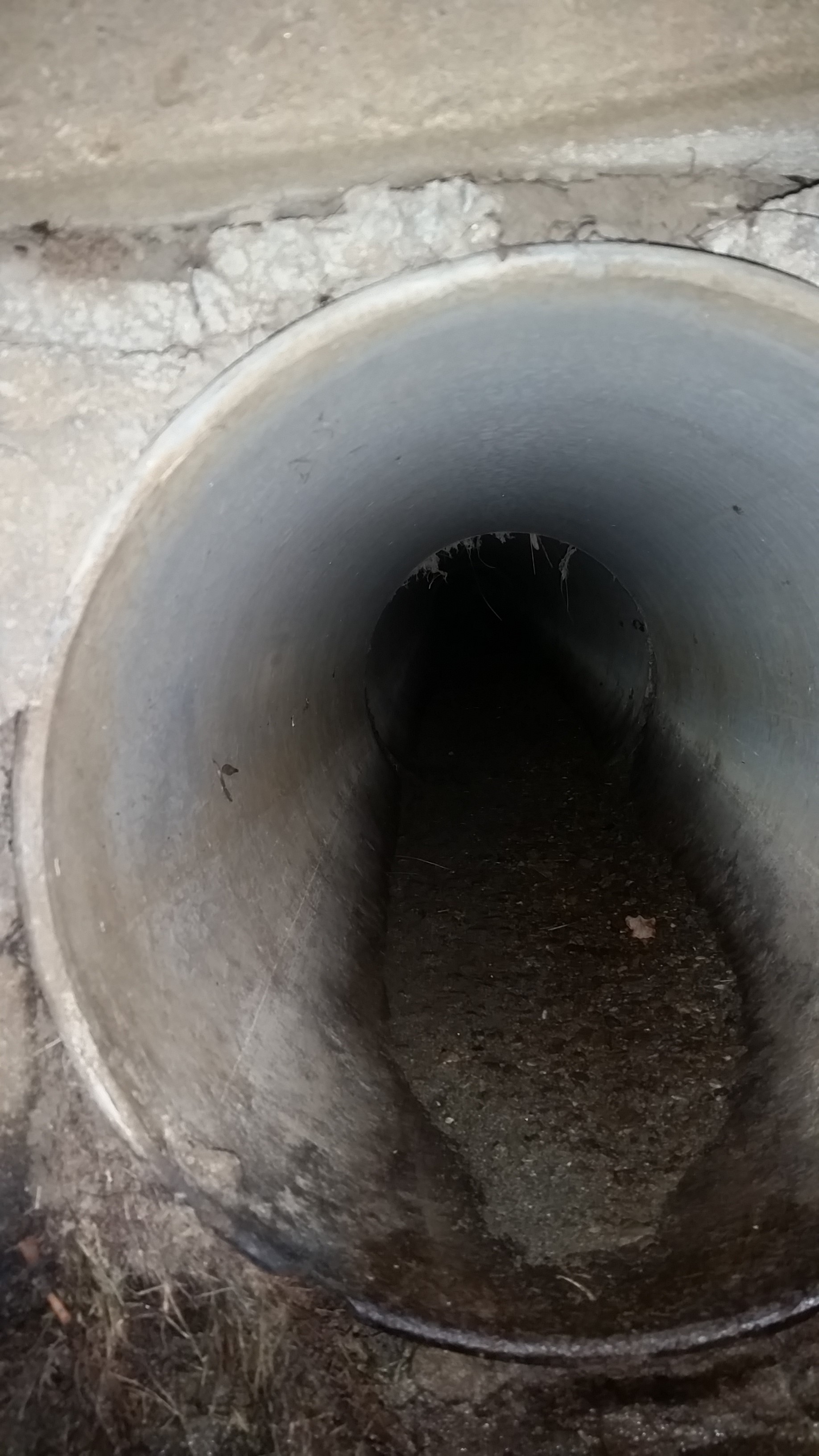
Adult wood frog wearing a transmitter in the forested wetland.
Thomas Hastings, Scientific Research Assistant, University of Maine
How much trouble can a wood frog (Lithobates sylvaticus) really encounter when moving through a neighborhood environment? Are there really that many risks? By attaching transmitters to adult wood frogs with fitted belts, yes belts, and radio-tracking individuals as they made spring migrations movements out of a vernal pool, we are able to answer some of these questions. The vernal pool is located in Bangor, Maine and is surrounded by multiple land cover types including a road, field, and neighborhood properties. Of the original 12 frogs being tracked from their breeding habitat, seven moved through the neighborhood for about 180 meters to reach a forested wetland patch.

Map showing the relocations of frog 142. The white dashed line moving into the street represents underground movements made by the frog. The white dashed line through the tree line represents me relocating the frog after retrieval from the storm drain.
Most of the frogs in the forested wetland were easy to track, making small movements within the forest. Occasionally a frog would make a long distance movement into the surrounding neighborhood. And usually the frog would return to the forest after not too long. But not 142 (the frequency of this frog’s transmitter). Frog 142 unexpectedly moved 137 meters into the neighborhood with no major rain event having occurred, which is when long distance movements are typically observed. The frog was found in grass and landscaping on multiple properties until finally it moved under a row of northern white-cedar (Thuja occidentalis) separating two yards. The selection of this location seemed to make more sense to me. The ground was moist and the cedar trees provided some cover. These features could reduce the risks of desiccation and predation. There was even leaf litter for the frog to be hiding under. What I did not account for was the storm drain located under the same row of cedars. Luckily, the radio telemetry equipment was able to pick up the signal of the transmitter when the frog was about 50 meters away in the drainage system.

The storm drain that the frog was retrieved from.
When the frog jumped into the storm drain, I knew that more people were going to become involved. To start, I needed the homeowner’s permission to have people come on their property and open up the storm drain. Bangor Public Works Department was contacted to assist in the “rescue” of our research animal. Little did they know that they were coming out to help find a frog. To be honest, I am glad that they did not ask what they were coming to retrieve before they made the drive out. Regardless, both the homeowner and the representative from Bangor Public Works were excited and willing to help out once they learned about the importance of this research. The outcome was great. The frog was surprisingly easy to find and catch. Frog 142 was tracked to the walkway of a front porch the day after it was released from the storm drain. The next day the transmitter’s signal was lost. There may have been a greater risk of predation for this frog due to lack of cover.
During this study, three out of the five frogs that spent extended periods of time in neighborhood environments encountered risks that could be reduced in forested wetlands. These risks include fatal lawn mower injuries and predation by animals such as domestic cats. Property owners in the neighborhood also made us aware of their attempts to help save wood frogs. One woman makes an effort to scan her lawn while she mows because she often spots frogs in her grass. Another man checks his pool each day during the summer to release any trapped frogs that may still be alive.
Vernal pool breeding amphibians, such as wood frogs, are exposed to these threats when making migration movements through urbanizing landscapes. To complete annual life history requirements, movement through fragmented landscapes can be necessary to reach important habitat areas. For example, during the summer, forested wetlands provide important environmental features to wood frogs such as moisture, cool temperatures, leaf litter, and food availability. So why do wood frogs choose to move into neighborhoods after they have successfully made it into forested wetlands? Are there particular environmental features in neighborhoods that attract wood frogs? These types of questions become important when considering the risks that frogs encountered throughout this study, and the number of vernal pools surrounded by fragmented landscapes.
